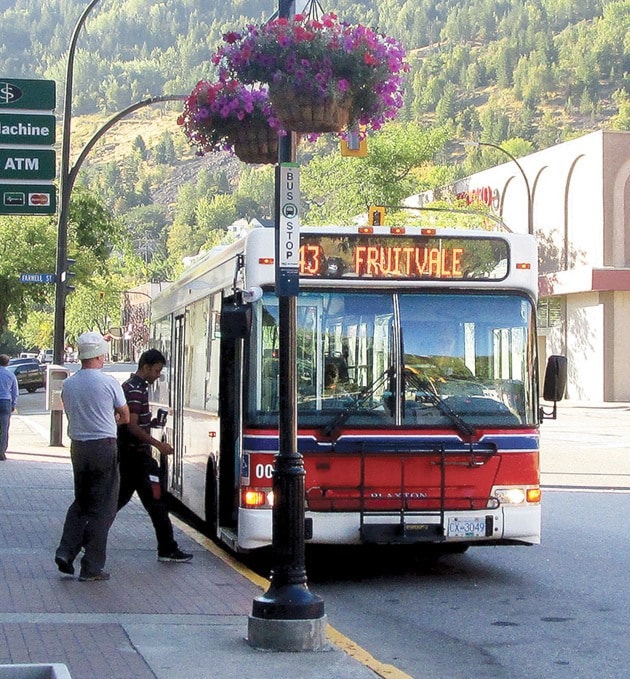More trips, shorter wait times for connectors and a Saturday bus between three cities are just a few ways BC Transit has encouraged locals to jump on board this year.
“We’re pleased to see an increase in ridership in the West Kootenay region in 2015/2016,” says Communications Manager Jonathon Dyck. “There have been a number of changes to the system that have supported the increase … ridership has increased across all three transit systems.”
The Kootenay Boundary division, comprised of Trail and Castlegar served 367,000 riders, which is a seven per cent increase in the number of fares since the year previous.
More riders is attributed to the March 2015 service changes which included a Saturday service introduction, as well as local service and regional connections between Trail, Selkirk College in Castlegar and Nelson.
“(These) changes have had a positive impact on customers,” said Dyck.
He noted revenue per trip actually decreased by one per cent, which is in fact, a positive.
“It reflects an increase in purchases of prepaid fare products relative to cash fares,” Dyck explained, listing a 27 per cent increase in tickets and 17 per cent increase in monthly passes. “The continued influx of international students to Selkirk College and their propensity to remain in the area after school terms contributing to increases in ridership and revenues.”
He says revenue fares go towards offsetting the costs of operating the system, if a region posts a surplus, the funding is used to support transit services in future years and if it is ongoing, it will help support expansion.
“BC Transit continues to work with our local government partners and the Province of BC to improve and expand service in the West Kootenay region,” Dyck added. “We’re currently planning for 2017/2018 and 2018/2019 to deliver improved local and regional connections.”
Elsewhere, the Nelson area saw 297,000 riders or a 10 per cent increase from 2014/2015, and Kootenay Lake West, an eight per cent increase including 6,394 fares for the health connections alone.
“The system continues to mature with increased customer convenience and confidence following the July 2013 West Kootenay system integration,” Dyck noted. “Total passenger trips and passenger trips per capita reflect an increase of 10 per cent with an accompanying eight per cent increase in total revenue, likely due in part to the added Saturday service introduced on the Kootenay Connector.”
In early July, the province unveiled details totalling almost $160 million in federal and provincial funding for BC Transit projects. The funding will support new facilities, buses, and technologies that will improve safety for passengers and drivers and make taking public transit more convenient and efficient.
While no specifics were released for the West Kootenay region, over $68 million was earmarked to replace 150 buses in communities throughout B.C. and $12 million for technology enhancements for BC Transit buses (SmartBus BC) throughout the province.
Earlier this year, BC Transit held an onboard customer survey and hosted three local open houses for a Greater Trail service review, which combined, drew 580 responses.
The most commonly heard themes were the need for improved bus signage, improved service frequency on popular routes, expanded service into areas not currently served, and an upgraded downtown Trail exchange.
BC Transit is undergoing next steps to develop the proposed recommendations and bring back detailed options to local partners and key stakeholders. Once this phase is complete, the service will present proposed changes to the public for feedback.
